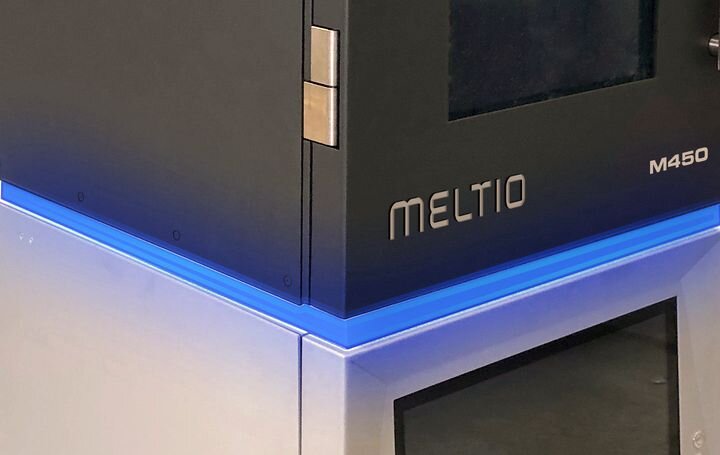![The Meltio M450 metal 3D printer [Source: Meltio]](https://fabbaloo.com/wp-content/uploads/2020/05/image-asset_img_5eb05096b3c80.jpg)
I’m looking at a new metal 3D printer, the M450, from Meltio.
If you haven’t heard of Meltio, I’m not surprised; it is an entirely new operation. But at the same time, it isn’t so new.
Meltio is a joint venture of two 3D printing companies: Spain-based Grupo Sicnova, and Las Vegas-based Additec.
We’re previously written about Grupo Sicnova, who have long produced a series of thermoplastic 3D printers, some of which are large and industrial-capable. Their JCR 600, for example, has a build volume of 600 x 400 x 500 mm, and is thus a competitor to other large-format devices such as those from BigRep or 3D Platform.
Meanwhile, Additec is an interesting startup that we’ve also encountered previously. Last year we had a chat with them regarding their μPrinter Metal 3D printer. This device was a metal 3D printer that uniquely uses both powder and wire deposition techniques.
![The Additec metal deposition tool head [Source: Fabbaloo]](https://fabbaloo.com/wp-content/uploads/2020/05/additecov-1_result_img_5eb05097003b3.jpg)
The deposition system includes a path for a central wire to emerge, where it is immediately melted by a ring of powerful lasers. The system also includes the ability to blow thin streams of metal powder at the same melt point, where they also can be instantly melted by the lasers.
Thus this deposition tool can be used to melt powder or wire without having to change any hardware. I’m not sure that you can perform both wire and powder deposition simultaneously, but you can mix different materials when using powder mode. This is also a rare capability for metal 3D printers, which typically only offer a single material.
At the time I spoke with Additec, it seemed their sophisticated deposition system was looking for a home. They did offer a machine, but also offered the system as an add-on to other equipment where metal 3D printing was required.
Meltio M450
Now it seems that the two companies have joined together to combine the metal deposition capabilities of Additec with the industrial 3D printer manufacturing knowledge of Grupo Sicnova. The result is Meltio. Currently the joint venture offers the M450, a metal 3D printer using the sophisticated deposition technology, as well as two industrial FFF machines, the F600 and F1000.
The M450 offers a vertically-oriented build chamber of 150 x 200 x 450 mm, and it’s a sealed, atmosphere controlled chamber to avoid oxidation. Configurations of three or more lasers are permitted. It’s also a closed-loop device that should offer very high quality 3D prints.
The most interesting part is the metal materials possible on the M450: “any commercially available metal in wire or powder”. This could significantly reduce the cost of 3D printing over typical metal 3D printers, which tend to require very expensive specialized metal powder to achieve good results. Specifically, powder must be 45-90 micrometers in diameter, and wire feedstock must be between 0.8-1.2mm diameter.
If you’re looking for an inexpensive metal 3D printing option, the Meltio M450 could be something to investigate.
Via Meltio

